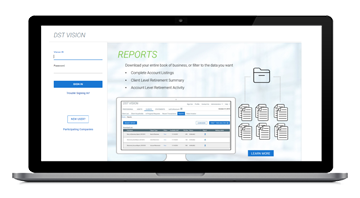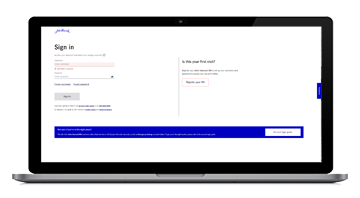The merits of a diversified alternatives approach
Investors often turn to alternatives as a means of diversifying investment portfolios in anticipation of increased market volatility. We believe this approach has merit and works to maximum effect when allocating across a diversified mix of alternatives. To follow is a review of three alternative strategies that could form part of a diversified approach.

1 Real assets provide an inflation hedge
Within the alternatives mix, real assets benefit from rising inflation through higher asset prices. As inflation pushes higher, the value of real estate, for example, increases, while aspects of infrastructure (e.g., toll road fees and gas and electric utilities) are often inflation linked, to the benefit of investors. Of particular relevance in today’s market environment is the rising price of commodities, specifically energy and agriculture. Energy prices that were expected to moderate earlier this year—having already risen sharply toward the end of 2021—continued their climb instead of moderating, in part due to Russia’s invasion of Ukraine. In early May, crude oil reached $105 a barrel, up 64% since December 31, 2021.
Agricultural production is also affected by the Russia-Ukraine conflict, which is pushing the price of food commodities higher after already increasing 23.1% in 2021. Russia and Ukraine combined account for nearly 30% of world wheat and 18% of corn exports, most of which is shipped through Ukraine’s Black Sea ports, which have been mostly inoperable due to the conflict. Also increasing are the prices of inputs to commodity production—notably fertilizer and energy costs—adding further to higher prices.
We believe the convergence of these multiple factors creates a set of risks that will sustain higher prices for some time. Prices of key commodities have been outpacing inflation since December 2020, with a notable jump from December 2021, even as inflation reached multidecade highs.
Real assets—specifically energy and commodities—have outpaced decades-high inflation
2 Trend following in a rising interest-rate environment
Rising interest rates are often negative for both bonds and equities, pushing bond prices lower while dampening equity valuations through slowing economic growth. A useful tool in a changing economic cycle is the ability to profit in both rising and falling markets. Managed futures strategies are an example of a trend-following approach that benefits from the ability to take long and short positions across almost any asset class, including equities, bonds, currencies, and commodities. This approach can generate positive returns regardless of market direction and may particularly benefit investors who have long-bias portfolios, where performance relies on rising markets and leaves investors potentially exposed during market downturns. With the ability to trade across asset classes, regardless of market direction, managed futures can help provide much-needed downside protection in volatile markets.
During previous periods of high volatility—such as the 2007–2009 Global Financial Crisis—managed futures helped investors protect capital when equities sold off.
$10,000 invested in managed futures at the start of the Global Financial Crisis appreciated relative to equity markets
3 Market neutral may offer dual benefits for investors
Market-neutral strategies may offer investors a compelling opportunity in the form of uncorrelated returns with potentially lower risk than core bonds, as well as steady performance in rising interest-rate environments.
The strategies’ objective of generating returns while hedging out market risk may particularly benefit income investors facing higher market volatility. Over the past two decades, market neutral has delivered total returns ahead of core bonds with less annualized volatility.
Market neutral: bond-like returns with less risk
January 2001–April 2022
|
Equities |
Bonds |
Market neutral |
Total return |
330.23% |
155.63% |
189.59% |
Annualized return |
6.75% |
4.29% |
4.88% |
Annualized volatility |
15.15% |
3.60% |
2.50% |
Given the current economic environment and the fact that we’re firmly in a rising interest- rate cycle, we see merit in income-focused market-neutral strategies that invest in assets—such as high dividend equities—with a similar risk profile to traditional bonds but without the concurrent interest-rate sensitivity. Over the past almost 20 years, market neutral has outperformed core bonds in periods of rising yields, which often precedes a rising interest-rate environment.
Market neutral has regularly outperformed bonds in periods of rising yields
Effective portfolio construction includes a diversified mix of alternatives
The current economic backdrop is presenting a more complex picture than usual as inflation continues rising and the U.S. Federal Reserve aims to simultaneously reduce inflation and maintain a recession-free economy. Alongside equities and fixed income, alternative strategies have a key role to play within a wider investment portfolio.
Moreover, just as investors typically diversify equity exposure between growth, value, and other styles and adopt a diversified approach to fixed-income assets, we believe it’s as important—if not more so—to apply a similar, well-diversified approach to the alternatives segment of an investment portfolio. Just as different equity and fixed-income strategies perform differently under varying market conditions, no one alternative strategy can be the top performer at every point in an economic cycle. Effective portfolio construction, in our view, should include a diversified mix of alternative strategies that aims to provide stable returns and offers meaningful diversification across varying market cycles.
Important disclosures
Uncorrelated assets are assets that don’t move in the same direction or that are not expected to perform in the same way at the time same time. Portfolios that have a greater percentage of alternatives may have greater risks. Diversification does not guarantee a profit or eliminate the risk of a loss. Past performance does not guarantee future results.
MF2241216







